new posts in all blogs
Viewing: Blog Posts Tagged with: 1961, Most Recent at Top [Help]
Results 1 - 14 of 14
How to use this Page
You are viewing the most recent posts tagged with the words: 1961 in the JacketFlap blog reader. What is a tag? Think of a tag as a keyword or category label. Tags can both help you find posts on JacketFlap.com as well as provide an easy way for you to "remember" and classify posts for later recall. Try adding a tag yourself by clicking "Add a tag" below a post's header. Scroll down through the list of Recent Posts in the left column and click on a post title that sounds interesting. You can view all posts from a specific blog by clicking the Blog name in the right column, or you can click a 'More Posts from this Blog' link in any individual post.

By:
Becky Laney,
on 9/19/2016
Blog:
Becky's Book Reviews
(
Login to Add to MyJacketFlap)
JacketFlap tags:
J Fiction,
Beverly Cleary,
J Realistic Fiction,
children's classic,
1961,
MG Fiction,
book I bought,
j historical,
books reviewed in 2016,
Add a tag
Emily's Runaway Imagination. Beverly Cleary. 1961. 288 pages. [Source: Bought]
First sentence: The things that happened to Emily Bartlett that year!
Premise/plot: Emily Bartlett is the heroine of Beverly Cleary's Emily's Runaway Imagination. Emily has many adventures or misadventures, many of which center around the formation of the first public library in her town. I would categorize the book as historical fiction. Reference is made to a world war, and, I think it may even be the first world war. One of the adventures involves Emily's grandpa getting a car. And having a car is a novelty in their town. Most people either walk, ride horses, drive a horse and wagon.
My thoughts: I really LOVE this one. If I read this one growing up, I only read it once. It's even possible this is one we didn't own. It took me so long to get to it as an adult because the local library doesn't have a copy of it. I bought this battered copy of it at my local charity shop for a quarter.
Favorite quotes:
"There are still books left to choose from," answered Mama.
And there were! Just think of it, real library books right here in Pitchfork, Oregon. The Dutch Twins, the Tale of Jemima Puddleduck--what a tiny book that was! Emily had not known they made such little books. The Curly-Haired Hen, English Fairy Tales. But no Black Beauty. Oh, well, perhaps another time. Emily chose English Fairy Tales because it was the thickest, and Mama wrote her name on a little card that she removed from a pocket in the book. Emily now had a library book to read. (117)
"Ma'am, is it all right if I get some books for my family?" he asked.
Mama smiled at the boy. "I don't believe I have seen you in Pitchfork before. Do you live in the country?"
"No, ma'am. I live in Greenvale," he answered. "We read about the library in the Pitchfork Report and I walked down the railroad track to see if we could get some books too."
"Why, that's at least four miles," said Mama, "and four miles back again."
The boy looked at the floor. "Yes ma'am."
"Of course you may take books for your family," said Mama. This boy wanted to read. That was enough for her. It made no difference where he lived. (118)
© 2016 Becky Laney of
Becky's Book Reviews
James and the Giant Peach. Roald Dahl. Illustrated by Quentin Blake. 1961. 146 pages. [Source: Library]
First sentence: Here is James Henry Trotter when he was about four years old.
Premise/plot: James, our hero-orphan being raised by two horrid aunts (one horribly fat, one terribly skinny), finds his fortune changing quickly one day when he meets a complete stranger--an older man--who promises to show him something wonderful and then pulls something out of his pocket...a small white paper bag filled with tiny green almost-glowing things. He's given instructions on how to use these green things to have a super-wonderful life. But. On his way home, he trips and the green things are lost...on the ground....but that is not the end. The title should give away the rest.
My thoughts: This one was weird and silly and unexpected and unique. I didn't hate it certainly. It is very Dahl. But I didn't love it. I find Dahl's lack of characterization annoying in some ways because instead of characterization we don't get more action or more adventure, we just get cruelty. Cruelty seems to be one thing all Dahl books have in common.
Aunt Sponge was enormously fat and very short. She had small piggy eyes, a sunken mouth, and one of those white flabby faces that looked exactly as though it had been boiled. She was like a great white soggy overboiled cabbage. (6)
I liked this one better once James enters the giant peach and meets all the insects who have been effected by the mystery green things.
© 2016 Becky Laney of
Becky's Book Reviews
Momo's Kitten. Mitsu and Taro Yashima. 1961. Viking. 33 pages. [Source: Bought]
First sentence:
Momo's family moved out West from New York City to Los Angeles, but Momo did not see any ranches or cowboys around her. Instead of these, on the way home from the nearby market one afternoon she found a miserable kitten under a geranium bush by the sidewalk. "If your father says it's all right, you may keep the kitty," Mother said. Momo made herself ready to cry in case Father should say it was not all right. Premise/plot: Momo, the heroine, finds a stray kitten and gets to keep it. To her surprise, but probably not to her parents' surprise, her cat, Nyan-Nyan grows up to have kittens of her own. She's not allowed to keep the kittens, but consoles herself, in a way, by making birth certificates for each kitten as they are given away. The illustration of the certificate I found quite charming. I would say this is a good, old-fashioned first-pet story.
My thoughts: I love, love, LOVE
Umbrella by Taro Yashima. I do. It's one of my favorite, favorite books. Momo's Kitten is another story starring Momo. So if you love Umbrella, you may just want to seek this out-of-print book out. Did I love it as much as Umbrella? Probably not. But I am glad I read it. I definitely enjoyed the text. Some illustrations I loved. Other illustrations not so much. I definitely found the illustrations for Umbrella to be more appealing.
Text: 4 out of 5
Illustrations: 3 out of 5
Total: 7 out of 10
© 2015 Becky Laney of
Becky's Book Reviews
Return to Gone-Away. Elizabeth Enright. 1961/2000. Houghton Mifflin Harcourt. 224 pages. [Source: Library]
I really enjoyed reading Elizabeth Enright's
Gone-Away Lake. I didn't enjoy reading the sequel nearly as much. Was I not in the right mood? Perhaps. I
hope it was just a mood thing. It
felt like the magic--the energy--was gone.
The book features many of the same characters, and tells of their further adventures in the spring and summer the following year. Their adventures AFTER they have purchased the old-and-crumbling house.
Portia, the heroine, reconnects with Julian, her cousin. Foster, Portia's younger brother, reconnects with the friends he's made in the community. All the children enjoy spending time with Mrs. Cheever and Mr. Payton. Adventures are to be had in their new house that requires fixing-up in every room and then some. Adventures also to be had outside in nature. Each chapter focuses on some mini-adventure that one of the children is having.
While I found myself connecting and caring with the characters in the first book, I didn't with the second.
© 2015 Becky Laney of
Becky's Book Reviews
Ten Apples Up On Top! Dr. Seuss (Theo LeSeig). Illustrated by Roy McKie. 1961. Random House. 72 pages. [Source: Library]
First sentence:
One apple up on top! Two apples up on top! Look, you. I can do it, too. Look! See! I can do three! Premise/plot: A lion, a dog, and a tiger take turns boasting about how many apples they can balance on top of their heads. It's not enough to have a lot of apples, you also have to do wild and crazy things while balancing a lot of apples up on top. By the end, everyone has had quite an adventure. How many animals will end up with apples up on top?
My thoughts: Last week, I reviewed The Sneetches and Other Stories. And the week before that I reviewed Green Eggs and Ham. Ten Apples Up on Top is a bit disappointing when compared to some of his other books. Though I should mention that it was published under the name Theo LeSieg and not Dr. Seuss. It is not illustrated by Dr. Seuss.
Have you read Ten Apples Up On Top? Did you like it? love it? hate it? I'd love to know what you think of it!
If you'd like to join me in reading or rereading Dr. Seuss (chronologically) I'd love to have you join me! The next book I'll be reviewing is Dr. Seuss' Sleep Book.
© 2015 Becky Laney of
Becky's Book Reviews
The Sneetches and Other Stories. Dr. Seuss. 1961. Random House. 65 pages. [Source: Library]
First sentence of The Sneetches:
Now, the Star-Belly Sneetches
Had Bellies with stars.
The Plain-belly Sneetches
Had none upon thars.
First sentence of The Zax
One day, making tracks
In the prairie of Prax,
Came a North-Going Zax
And a South-Going Zax.
First sentence of Too Many Daves
Did I ever tell you that Mrs. McCave
Had twenty-three sons and she named them all Dave?
First sentence of What Was I Scared Of?
Well...
I was walking in the night
And I saw nothing scary.
For I have never been afraid
Of anything. Not very.
Plot/Premise of The Sneetches: Star-Belly Sneetches and Plain-Belly Sneetches have trouble playing and working together. The Plain-Belly Sneetches are envious of the Stars on the Star-Belly Sneetches. And the Star-Belly Sneetches look down on the Plain Belly sort. Sylvester McMonkey McBean takes advantage of the whole situation with his "Star On" and "Star Off" machine. He makes a LOT of money in the process. Will the Sneeches ever learn?
Plot/Premise of The Zax: A North-Going Zax and a South-Going Zax meet. Neither Zax will budge because, of course, the North-Going Zax will only go North, and the South-Going Zax will only go South. Take a step in the wrong direction?! Never! How long will these two be stubborn?
Plot/Premise of Too Many Daves: The premise of this one is simple and clearly stated in the first sentence: The McCave family has too many sons named Dave. The joy in this one comes from reading it aloud. All the names she wished she'd chosen. Names like "Hoos-Foos" "Putt-Putt" and "Oliver Boliver Butt."
Plot/Premise of What Was I Scared Of? The narrator of this one claims he's not scared of anything. But one night when he sees a pair of pale green pants with nobody inside them...he becomes very frightened indeed. Will he ever overcome his fear? Should he overcome his fear?
My thoughts on The Sneeches: This is a fun story. And it's so very quotable! This is a great start to a great story collection.
My thoughts on The Zax: Another fun story, and very true to life. Sometimes people are really that stubborn.
My thoughts on Too Many Daves: This one is shorter than the others perhaps, but, it's quite enjoyable! Some of the names are quite memorable too.
My thoughts on What Was I Scared Of? This one is probably my most favorite of all. I love, love, love this one. I had the record of this book, but, it is the audio narration of this one that has stayed with me the most. It is just a wonderful little story. And so quotable!!!
After that, a week went by.
Then one dark night in Grin-itch
(I had to do an errand there
And fetch some Grin-itch spinach)...
Well, I had fetched the spinach.
I was starting back through town
When those pants raced round a corner
And they almost knocked me down!
and
I ran and found a Brickel bush.
I hid myself away.
I got brickels in my britches
But I stayed there anyway.
and
I said, "I do not fear those pants
With nobody inside them."
I said, and said, and said those words.
I said them. But I lied them.
Have you read The Sneetches and Other Stories? What did you think of it? Did you like it? love it? hate it? Is it one you grew up reading?
If you'd like to join me in reading or rereading Dr. Seuss (chronologically) I'd love to have you join me! The next book I'll be reviewing is 10 Apples Up on Top.
© 2015 Becky Laney of
Becky's Book Reviews

By:
Becky Laney,
on 12/7/2014
Blog:
Becky's Book Reviews
(
Login to Add to MyJacketFlap)
JacketFlap tags:
books reviewed in 2014,
picture books,
2007,
1938,
children's classic,
1961,
1998,
1905,
1939,
1987,
library book,
1989,
1985,
1903,
1960,
Add a tag
Rudolph the Red-Nosed Reindeer. Robert Lewis May. Illustrated by Denver Gillen. 1939/1990. Applewood Books. 32 pages. [Source: Library]I enjoyed this one more than I thought I would. This is the original story by Robert L. May with the original illustrations by Denver Gillen. It is so different from the song and the stop-motion animated special. And I think it was the fact that it was different that made me appreciate it more.
The story is told in rhyme. It's essentially one long (perhaps poorly punctuated) poem. Here's how it begins:
Twas the day before Christmas, and all through the hills
The reindeer were playing…enjoying the spills
Of skating and coasting, and climbing the willows…
And hop-scotch and leap-frog (protected by pillows!)
While every so often they'd stop to call names
At one little deer not allowed in their games:--
"Ha ha! Look at Rudolph! His nose is a sight!"
"It's red as a beet!" "Twice as big!" "Twice as bright!"
While Rudolph just wept.
What else could he do?
He knew that the things
they were saying were true!
Readers first meet Rudolph, a young deer who is teased by his peers. He does NOT live at the North Pole. And he's not one of Santa's own reindeer.
What we do learn is that he's a very good, very obedient deer who is expecting Santa to leave him some lovely presents because he's been so very, very good.
Readers then meet Santa and learn of the horrible weather conditions that prove most challenging. Santa starts out on his trip, it isn't until he's delivering presents to Rudolph's house that he notices the brilliant light of his nose.
Santa then decides to wake him up and ask for his help. The rest of the journey goes much easier for Santa!
The book concludes with Santa returning Rudolph to his family, to his hometown. He is now a hero, of course.
I liked this one. I liked some of the rhymes more than others. There are definitely some quirky lines!
Come Dasher! Come Dancer! Come Prancer and Vixen!
Come Comet! Come Cupid! Come Donner and Blitzen!
Be quick with your suppers! Get hitched in a hurry!
You, too, will find fog a delay and a worry!"
And Santa was right. (As he usually is!)
The fog was as thick as a soda's white fizz.
The book is definitely text-heavy. So a longer attention span would be needed for little ones to enjoy this one.
The copy I read was a facsimile edition. A 75th Anniversary edition with new illustrations was released in September 2014.
On Christmas Eve. Margaret Wise Brown. Illustrated by Nancy Edwards Calder. 1938/1961/1996. HarperCollins. 32 pages. [Source: Library]It was the middle of the night. And night of all nights it was Christmas. I enjoyed Margaret Wise Brown's On Christmas Eve. It is a descriptive look at what Christmas--at what Christmas Eve--is like for children. It focuses on simple things: what your eyes see, what your ears hear, what your nose smells, what your hands and feet touch. It seeks to capture the emotion of the holiday: the excitement, the waiting, the longing.
Lots of details, lots of adjectives. It's rich in imagery and description. There is also a bit of repetition. The text is lyrical in places.
I can't say that I loved it. But it was very enjoyable. I was also glad to see that one of the presents under the tree was a train. The children are just in awe of the magic of Christmas, of the stockings and packages, of the snow falling outside, of the carolers outside.
It was a sweet story about three siblings.
Silver Packages: An Appalachian Christmas Story. Cynthia Rylant. Illustrated by Chris K. Soentpiet. 1987. Scholastic. 32 pages. [Source: Library] Silver Packages is a picture book for older readers most likely. I wouldn't say it is for an exclusively adult audience. But I think readers need some perspective in order to appreciate the book fully. I think it can resonate with readers, it has the potential. But I don't think the emotional reaction would be--or even should be--automatic. One can't assume that every reader will respond with tears and "this is the best book I've ever read!!!"
Silver Packages is about giving back to the community. In this instance, one very specific community--Appalachia. The book is about the Christmas Train. It starts with one man who wants to show his appreciation for the community that helped him when he needed it. He was injured in an accident, the community took in this stranger and nursed him back to health without asking for anything in return. He decides that he will come every year--by train--and hand out packages to the children who meet the train. These packages are wrapped in silver paper. Every story needs a protagonist. Silver Packages introduces us to Frankie. Readers first meet Frankie as a boy. He's a boy with a dream. He wants to be a doctor. And he really, really, really wants a doctor kit for Christmas. But each year, he's slightly disappointed. He receives a handful of silver packages through the years. Every gift seems to have a toy--something a boy or girl might want--and something a boy or girl might need. The practical gifts include: socks, mittens, hats, scarves, etc. Readers later see Frankie all grown up. He is a doctor. He reflects on his life, on his past Christmases, he has a light-bulb moment. He decides it is his turn to give back to the community in his own special way. It's a book about kindness and gratefulness and community awareness.
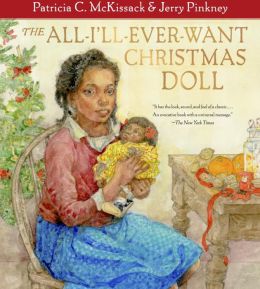
I haven't read The All-I'll-Ever Want-Christmas Doll in years. It was just as good as I remembered. The book is set during the Depression. A little girl, Nella, knows that her family is poor, that Santy may not come this year at all. Yet, she can't resist writing to him all the same begging for a Baby Betty doll. Her two sisters perhaps think a little less of Nella for her dreaming so big. She shouldn't expect so much from Christmas. But on Christmas morning, there are a few surprises. Each girl gets a Christmas sack filled with walnuts, peppermint candy, an orange, and a box of raisins. But there is one present, one special present remaining: a doll. Nella thinks the doll should be HERS and hers alone. After all, her sisters haven't gone around talking about the doll nonstop, her sisters didn't write Santa a letter begging for the doll. Why should she have to share the doll with them? But does the doll make her happy? Is the doll truly all she'll ever want? She has a few lessons to learn for sure!
I really enjoyed the story and the message.
The Bells of Christmas. Virginia Hamilton. Illustrated by Lambert Davis. 1989/1997. Houghton Mifflin Harcourt. 64 pages. [Source: Library] I didn't dislike Virginia Hamilton's The Bells of Christmas. But I didn't love, love, love it either. I think it depends on what exactly you're expecting from a Christmas book. The Bells of Christmas is very much a celebration of a Christmas long ago. Christmas 1890. Readers meet a young boy, Jason Bell, and experience the holiday through his perspective. We learn about his mom and dad, his brothers and sisters, his cousins, his aunt and uncle, his friend, Matthew. The book is set over a period of several days. Among the things readers learn that Jason's dad is a carpenter, that he wants his sons to join him in his business one day, his dad has only one leg, that his dad wears a peg leg part of the time and is in his wheel chair the rest of the time. Readers also learn that Jason is just a wee bit obsessed with wheels--mainly trains, but, also wagons, etc. The book has plenty of detail and characterization which is a good thing. Jason is waiting for quite a few things: 1) he can't wait for Christmas morning and presents! 2) he can't wait for the Bells to arrive--his uncle and aunt and cousins, 3) he is excited about church, most everyone is performing and participating in some way. (Jason is singing a solo.) The book perhaps seeks to capture one Christmas for one extended family. It is a pleasant, enjoyable book. It isn't quite a chapter book or novel. It isn't quite a picture book.
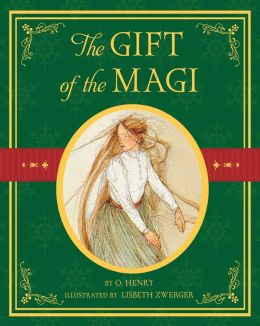
I've seen adaptations of The Gift of the Magi--who hasn't? (My favorite is Bert and Ernie and Mr. Hooper.) But this is the first time I've read the actual short story. I haven't decided how I feel about it. Is this couple wise or foolish? Or are they at times foolish and at times wise?
The wife, Della, takes extraordinary pride in her long hair. She doesn't seem the vain sort except for when it comes to her hair. And even if she is vain about it, there's no indication it's anything besides a private vanity. The wife apparently has been coveting expensive hair combs as well. The husband, Jim, takes extraordinary pride in the family watch. The narrator uses exaggeration when discussing the woman's long hair and the man's gold watch. I didn't love the narrator. In fact, I think the narrator is a distraction. He won't let the reader forget for a moment that this is a precious story.
Now, there were two possessions of the James Dillingham Youngs in which they both took a mighty pride. One was Jim's gold watch that had been his father's and his grandfather's. The other was Della's hair. Had the queen of Sheba lived in the flat across the airshaft, Della would have let her hair hang out the window some day to dry just to depreciate Her Majesty's jewels and gifts. Had King Solomon been the janitor, with all his treasures piled up in the basement, Jim would have pulled out his watch every time he passed, just to see him pluck at his beard from envy.
The wife can't afford a gift for her husband. The husband can't afford a gift the wife. The wife knows this--or should know this. The husband knows this--or should know this. The wife has saved $1.87. The husband might have saved a small sum as well. Readers don't know one way or the other. Both husband and wife will have something to offer the other, however. Something more than love. For both have decided--quite independently--to give sacrificially. To give up what they supposedly value most: her hair, his watch. And this giving up wasn't to support the family, but, to support the other's vanity.
I think actions can speak more than words. I think the narration took away some of my enjoyment of this one. It felt odd at times. There were sentences that were eloquent and refined and then it would slip into something else.
"It's sold, I tell you--sold and gone, too. It's Christmas Eve, boy. Be good to me, for it went for you. Maybe the hairs of my head were numbered," she went on with sudden serious sweetness, "but nobody could ever count my love for you. Shall I put the chops on, Jim?"
I think I like the adaptations better.
The Tailor of Gloucester. Beatrix Potter. 1903. 58 pages. [Source: Library] In the time of swords and periwigs and full-skirted coats with flowered lappets—when gentlemen wore ruffles, and gold-laced waistcoats of paduasoy and taffeta—there lived a tailor in Gloucester.
He sat in the window of a little shop in Westgate Street, cross-legged on a table, from morning till dark.
All day long while the light lasted he sewed and snippeted, piecing out his satin and pompadour, and lutestring; stuffs had strange names, and were very expensive in the days of the Tailor of Gloucester.
I enjoyed rereading Beatrix Potter's The Tailor of Glouchester. In this delightful Christmas tale, readers meet a tailor, a cat named Simpkin, and some lovely mice. It is several days before Christmas. He's working hard to finish a coat and waistcoat for the Mayor of Glouchester. The Mayor is getting married on Christmas day. The tailor has just enough money to finish the coat. Not a penny to spare. He sends his cat, Simpkin, with his money to buy what he needs: a little for himself (food: bread, sausage, milk) a little for his work (one twist of cherry-coloured silk). It is only after the fact that he questions whether he should have sent the cat or gone himself. The cat returns, but, in a mood. The cat is upset for he's discovered that the tailor freed the mice he had captured and hid under the teacups. The cat hides the twist. The man is upset, of course, and sick. He takes to his bed unable to work. The oh-so-thankful mice go to his shop and finish his work for him. But since they are one twist short, they are unable to finish completely. Still, they do what they can, and they do a wonderful job. The cat who spies them at work, I believe, has a change of heart and gives the twist to the old man on Christmas morning. He has just enough time to finish. The Mayor is very, very pleased. And the tailor's luck changes for the better, and his business is much improved. This one is a lovely, delightful read from start to finish.

I enjoyed reading Lucy's Christmas by Donald Hall. Lucy's Christmas is a picture book set in 1909 in New Hampshire. In the fall of 1909, Lucy and her family start preparing for Christmas. For Lucy, this means starting to make her own gifts for her family and friends. It pays to plan ahead since so many gifts take time, and thought must be placed into each gift. She's not the only one thinking ahead. This year the family is ordering a new stove for the kitchen. The family has spent a lot of time browsing in the Sears catalog. Lucy's choice is the one the family decides upon: the Glenwood Kitchen Range. The focus is not just on gifts: planning, making, giving, receiving. The focus is also on family life and community life. Readers get glimpses of the school and church. Both places are very busy! I enjoyed this glimpse into the past! It was interesting to see the family prepare for the new year--1910. The enthusiasm in the story is sweet. The author's note reveals that this picture book is based on family history.
I really liked this one very much. I liked Lucy and her family. I liked the fact that the church plays such a HUGE role in the Christmas celebrations. There are gifts, it's true. But it's not commercialized and selfish.
Baboushka and the Three Kings. Ruth Robbins. Illustrated by Nicholas Sidjakov. 1960/1986. Houghton Mifflin Harcourt. 32 pages. [Source: Library]Long ago and far away, on a winter's evening, the wind blew hard and cold around a small hut. Baboushka and the Three Kings won the Caldecott Medal in 1961. It is Russian folktale with a Christmas setting. The three kings--wise men--come to Baboushka's hut. They only stay a few minutes. Long enough to extend an invitation to the old woman. Will she join them in their procession, in their quest, to find the Babe, the Child? She'd love to join them, she'd love to bring gifts to the Child. But she is not ready to go just yet. Couldn't they all wait until morning? Couldn't they wait for her to finish up a few small, tiny chores first? Couldn't they wait for the storm to clear? Their answer was firm. Their journey to the Child was too important to postpone. They couldn't linger longer. She watched them depart. But they were not easy men to forget. The next morning, she begins a journey of her own. A journey that will take her far. But will her journey lead her to where she wants to go?
It's a simple story, nicely written. "It is no ordinary Babe they seek. Yes! I must go and follow them! To find the new Babe, to offer Him her gift, was now her one yearning. This thought burned in her mind like a candle in the dark." It is also nicely illustrated. The illustrations complement the text well. Both illustrations and text have a different flavor, an authentic flavor, but not exactly American. After several readings, I came to appreciate both a bit more.
In case you're unfamiliar with the story, the book is bittersweet at best. While it is true that Russian children everywhere look forward to Baboushka's gifts each year as her journey continues, it is also true that Baboushka's journey has no happy ending. She never finds the Child. She is never able to give Him her gifts.
Polar Express. Chris Van Allsburg. 1985/2009. Houghton Mifflin Harcourt. 32 pages. [Source: Library] The Polar Express is one of my favorite Christmas books. It is. The book is a thousand times better than the movie. (Though the soundtrack of the movie isn't bad.) So if you've only seen the movie, you might want to give the book a try to. You might have a different response to it.
The Polar Express is about belief and doubt--in Santa. It's told in the first person, so we never learn the protagonist's name, but it is a little boy with a younger sister named Sarah. One Christmas Eve, the little boy is awakened by The Polar Express. He goes to the North Pole on the Polar Express train, there are other passengers too. All presumably boys and girls on the verge of not-believing. At the North Pole, he sees Santa, reindeer, and elves. He happens to be chosen to receive the first gift of Christmas. He asks for a bell from Santa's reindeer. This gift is not in his possession for long, however, because he has a hole in his pocket. On Christmas day, he receives a special gift under the tree: the bell he had lost. He can hear it. His sister can hear it. But his parents do not. The book ends wonderfully with a message for "all those who truly believe."
I loved this one cover to cover, though I love the ending most of all. © 2014 Becky Laney of
Becky's Book Reviews

By: Lauren,
on 5/12/2011
Blog:
OUPblog
(
Login to Add to MyJacketFlap)
JacketFlap tags:
PBS,
US,
civil rights,
oprah,
Martin Luther King,
bus,
violence,
African American Studies,
documentary,
KKK,
college students,
1961,
coretta scott,
American Experience,
Freedom Riders,
Raymond Arsenault,
*Featured,
freedom rides,
racial justice,
ray arsenault,
whites only,
arsenault,
riders,
rides,
raymond,
anniston,
augusta,
Add a tag
Raymond Arsenault was just 19 years old when he started researching the 1961 Freedom Rides. He became so interested in the topic, he dedicated 10 years of his life to telling the stories of the Riders—brave men and women who fought for equality. Arsenault’s book, Freedom Riders: 1961 and the Struggle for Racial Justice, is tied to the much-anticipated PBS/American Experience documentary “Freedom Riders,” which premiers on May 16th.
In honor of the Freedom Rides 50th anniversary, American Experience has invited 40 college students to join original Freedom Riders in retracing the 1961 Rides from Washington, DC to New Orleans, LA. (Itinerary, Rider bios, videos and more are available here.) Arsenault is along for the ride, and has agreed to provide regular dispatches from the bus. You can also follow on Twitter, #PBSbus.
Day 4–May 11: Augusta, GA, to Anniston, AL
As we left Augusta, I gave a brief lecture on Augusta’s cultural, political, and racial history–emphasizing several of the region’s most colorful and infamous characters, notably Tom Watson and J. B. Stoner. Then we settled in for the long bus ride from Augusta to Atlanta, a journey that the students soon turned into a musical and creative extravaganza featuring new renditions of freedom songs, original rap songs, a poetry slam–all dedicated to the original Freedom Riders. These kids are quite remarkable.
In Atlanta, our first stop was the King Center, where we were met by Freedom Riders Bernard Lafayette and Charles Person. Bernard gave a fascinating impromptu lecture on the history of the Center and his experiences working with Coretta King. We spent a few minutes at the grave sight and reflecting pool before entering the newly restored Ebenezer Baptist Church. The church was hauntingly beautiful, especially so as we listened to a tape of an MLK sermon and a following hymn. The kids were riveted.
Our next stop was Morehouse College, King’s alma mater, where we were greeted by a large crowd organized by the Georgia Humanities Council. After lunch and my brief keynote address, the gathering, which included 10 Freedom Riders, broke into small groups for hour-long discussions relating the Freedom Rides to contemporary issues. Moving testimonials and a long standing ovation for the Riders punctuated the event. Later in the afternoon, we headed for Alabama and Anniston, taking the old highway, Route 78, just as the CORE Freedom Riders had on Mother’s Day morning, May 14, in 1961. However, unlike 1961’s brutal events, our reception in Anniston, orchestrated by a downown redevelopment group known as the Spirit of Anniston, could not have been more cordial. A large interracial group that included the mayor, city council members, and a black state representative joined us for dinner before accompanying us to the Anniston Public Library for a program highlighted by the viewing of a photography exhibit, “Courage Under Fire.” The May 14, 1961 photographs of Joe Postiglione were searing, and their public display marks a new departure in Anniston, a community that until recently seemed determined to bury the uglier aspects of its past. The whole scene at the library was deeply emotional, almost surreal at times. The climax was a confessional speech b

By: Lauren,
on 5/11/2011
Blog:
OUPblog
(
Login to Add to MyJacketFlap)
JacketFlap tags:
PBS,
oprah,
violence,
charlotte,
1961,
Raymond Arsenault,
racial justice,
ray arsenault,
whites only,
arsenault,
documentary,
college students,
riders,
lunch counter,
rides,
raymond,
Freedom Riders,
freedom rides,
Add a tag
Raymond Arsenault was just 19 years old when he started researching the 1961 Freedom Rides. He became so interested in the topic, he dedicated 10 years of his life to telling the stories of the Riders—brave men and women who fought for equality. Arsenault’s book, Freedom Riders: 1961 and the Struggle for Racial Justice, is tied to the much-anticipated PBS/American Experience documentary “Freedom Riders,” which premiers on May 16th.
In honor of the Freedom Rides 50th anniversary, American Experience has invited 40 college students to join original Freedom Riders in retracing the 1961 Rides from Washington, DC to New Orleans, LA. (Itinerary, Rider bios, videos and more are available here.) Arsenault is along for the ride, and has agreed to provide regular dispatches from the bus. You can also follow on Twitter, #PBSbus.
Day 3–May 10: Charlotte, NC, to Augusta, GA
We started the day with a breakfast meeting at a black Pentecostal church in West Charlotte. The students had the chance to sit with local civil rights activists such as former Freedom Rider Charles Jones, who gave another inspirational “blessing” that included rousing freedom songs. The next stop, a few blocks away, was West Charlotte High School, an important site in the school desegregation saga in Charlotte and Mecklenburg County. Since our freedom bus was temporarily out of commission (the AC was being fixed), we drove up in a red, doubled-decker, London-style “party bus.” Some of the kids rushed out to greet us, perplexing the school security guards, who weren’t expecting a freedom ride on their doorstep. West Charlotte High, once a model of racial integration and educational improvement, has fallen on hard times, the victim of resegregation and neglect since the mid-1990s.
On to Rock Hill, SC, the birthplace of “jail-no bail” in February 1961 and the home of the courageous Friendship Nine, arrested in 1961. Five of the nine joined us for an emotional lunch at a recently refurbished McCrory’s, site of the famous 1961 sit-in. Andrea Barnett, a black special-ed teacher from Charlotte, who recently completed a 3,000 mile Freedom Ride (designed to instill self-confidence in her students) on her motorcycle, accompanied by her white boyfriend, from DC to New Orleans and back to Charlotte, was on hand to sing a beautiful and moving folk song (that she wrote) dedicated to the Freedom Riders. Also on hand was a Catholic priest, Father Boone, who has been in Rock Hill for 52 years, much of the time a lone local white voice preaching racial tolerance and justice. It was quite a scene. As we drove off across South Carolina to Augusta, GA, there were more than a few tear-stained faces on the (mercifully) retooled, air-cooled freedom bus. On to Atlanta and Anniston this morning.
Raymond Arsenault is the John Hope Franklin Professor of Southern History and and Director of Graduate Studies for the Florida Studies Program at the University of South Florida, St. Petersburg. You can watch his discussion with director Stanley Nelson on The Oprah Show

By: Lauren,
on 5/10/2011
Blog:
OUPblog
(
Login to Add to MyJacketFlap)
JacketFlap tags:
PBS,
US,
civil rights,
oprah,
bus,
violence,
African American Studies,
documentary,
greensboro,
college students,
1961,
American Experience,
Freedom Riders,
Raymond Arsenault,
*Featured,
freedom rides,
racial justice,
ray arsenault,
whites only,
arsenault,
riders,
lunch counter,
lynchburg,
Add a tag
Raymond Arsenault was just 19 years old when he started researching the 1961 Freedom Rides. He became so interested in the topic, he dedicated 10 years of his life to telling the stories of the Riders—brave men and women who fought for equality. Arsenault’s book, Freedom Riders: 1961 and the Struggle for Racial Justice, is tied to the much-anticipated PBS/American Experience documentary “Freedom Riders,” which premiers on May 16th.
In honor of the Freedom Rides 50th anniversary, American Experience has invited 40 college students to join original Freedom Riders in retracing the 1961 Rides from Washington, DC to New Orleans, LA. (Itinerary, Rider bios, videos and more are available here.) Arsenault is along for the ride, and has agreed to provide regular dispatches from the bus. You can also follow on Twitter, #PBSbus.
Day 1-May 8: Washington to Lynchburg,VA
Glorious first day. Student riders are a marvel–bright and engaged. Began with group photo in front of old Greyhound station in DC, where the 1961 Freedom Ride originated. On to Fredericksburg and a warm welcome at the University of Mary Washington, where James Farmer spent his last 14 years. One of the student riders, Charles Lee is a UMW student. Second stop at Virginia Union in Richmond, where the 1961 Riders spent their first night. Greeted by VU Freedom Rider Reginald Green, charming man who as a young man sang doo-wop with his good friend Marvin Gaye. Third stop in Petersburg, where former Freedom Rider Dion Diamond and Petersburg native led a walking tour of a town suffering from urban blight; drove by Bethany Baptist, where the 1961 Riders held their first mass meeting. On to Farmville and the Robert Russa Moton Museum, formerly Moton High School, the site of the famous 1951 black student strike led by Barbara Johns; our student riders were spellbound by a panel discussion featuring 2 of the students involved in the 1951 strike and later in the struggle against Massive Resistance in Farmville and Prince Edward County, where white supremacist leaders closed the public schools from 1959 to 1964. On to Lynchburg, where the 1961 Freedom Riders spent their third night on the road and where we ended a long but fascinating first day. Heade for Danville, Greensboro, High Point, and Charlotte this morning. Buses are a rollin’!!!
Day 2-May 9: Lynchburg, VA, to Charlotte, NC
The second day of the Student Freedom Ride was full of surprises. We left Lynchburg early in the morning bound for Charlotte. We passed through Danville, once a major site of civil rights protests, where the 1961 Freedom Riders encountered their first opposition and experienced their first small victory–convincing a white station manager to relent and let three white Riders eat a “colored only” lunch counter.
Our first stop was in Greensboro, where we toured the new International Civil Rights museum, located in the famous Woolworth’s–site of the February 1, 1960 sit-in. This was my first visit to the museum, even though I was one of the historical consul
The Pilgrimage: The Unforgettable SF Masterpiece of the Strangers Among Us: The First Book of The People. Zenna Henderson. 1961. 255 pages.
The window of the bus was a dark square against the featureless night. I enjoyed this science fiction novel very much! The novel opens with a young woman, Lea, contemplating suicide. But fate--in the form of a woman--intervenes. Karen reaches out to Lea at her most vulnerable moment and persuades her to take the first baby step towards life, towards hope. She encourages her to wonder. Karen takes her home, takes her to The People. The People are gathering nightly--they have decisions of their own to make, decisions just as important perhaps--but they are gathering to tell stories, to record their stories, their histories, their journeys. Lea, an outsider, hears things that are almost to incredible to believe.
Who are The People? Where did they come from? How can they do the things they do? Read and see for yourself!
I enjoyed the stories. I enjoyed the characters. I enjoyed the storytelling. Many of these stories could be described as coming-of-age stories. I'd definitely recommend this one.
Another review:
Necromancy Never Pays.
© 2011 Becky Laney of
Becky's Book Reviews

By: Becky,
on 9/10/2010
Blog:
Young Readers
(
Login to Add to MyJacketFlap)
JacketFlap tags:
poetry,
humor,
children's music,
songs,
Candlewick,
2004,
2010,
1961,
review copy,
Add a tag
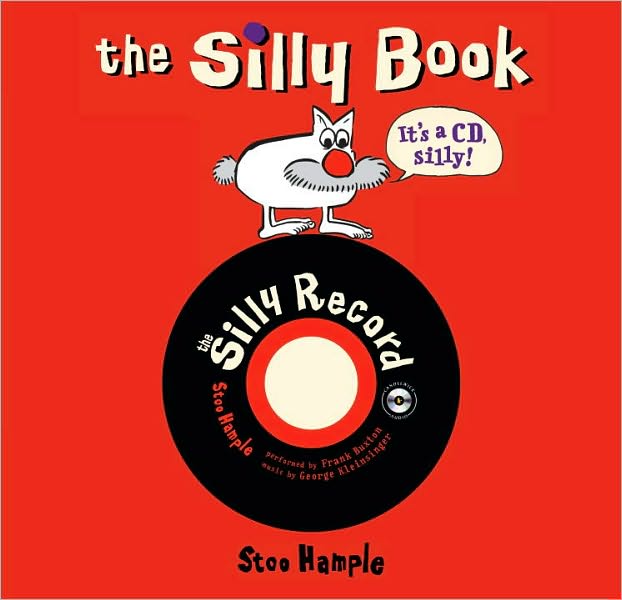
The Silly Book with CD. Stoo Hample. 2010/2004/1961. Candlewick Press. 32 pages.
Candlewick Press has reprinted Stoo Hample's The Silly Book; it was originally published along with the Silly Record (LP) in 1961. This latest edition--there was another reprint in 2004--includes the CD containing twenty-three minutes of silly songs and poems. How silly is silly? Very! It's silly nonsense through and through.
I had to listen to the CD a few times before I started to enjoy it. But. Once I gave it some of my time and attention, I must admit that *some* of the silliness worked for me. (Not that I'd want to listen to it continuously for weeks or anything.)
Here's one of my favorites:
Silly Recipe
Cook three pieces of
spaghetti in a pan of
water for two years.
Add one teaspoonful
of chocolate syrup
and mix well.
Spread on bread
and freeze.
Feed to teddy bear.
I also enjoyed "Silly Backwards Talk" and "Silly Story."
© Becky Laney of
Young Readers

By: Rebecca,
on 1/26/2010
Blog:
OUPblog
(
Login to Add to MyJacketFlap)
JacketFlap tags:
book,
Film,
Current Events,
American History,
A-Featured,
A-Editor's Picks,
Media,
Sundance,
1961,
American Experience,
Firelight Media,
Freedom Riders,
Raymond Arsenault,
Stanley Nelson,
Add a tag
Raymond Arsenault is the John Hope Franklin Professor of Southern History and co-director of the Florida Studies Program at the University of South Florida, St. Petersburg. His book, Freedom Riders: 1961 and the Struggle for Racial Justice, is the full-length story of one of the most celebrated episodes of the civil rights movement. The book has recently been turned into a film which premiered at Sundance yesterday. Below Arsenault talks about the experience.
It was an emotional experience to be at the first public showing of the American Experience documentary based on my book, Freedom Riders. After nearly ten years of research and writing, followed by two years of collaboration with the American Experience staff and Stanley Nelson’s remarkable crew of filmmakers at Firelight Media, I felt like I had emerged from a long dark tunnel into the light–or more aptly, like someone who had finally stepped off a bus after the world’s longest bus ride. I’m sure that I would have felt this way in just about any venue, but the Sundance scene made the experience especially intense and gratifying. The audience seemed to be spellbound, and I found myself carried away with them, though I couldn’t help wincing every time I appeared on the screen. Seeing yourself on the screen offers a dose of reality, which in my case will send me back to the South Beach diet with a vengeance once my wife and I leave the culinary temptations of Park City. Most important, the moral power and political challenges of the Freedom Rider story were so evident throughout the film, and I found myself turning back to look at Jim Zwerg and Bernard Lafayette, the two Freedom Riders sitting in the row behind me. What they were experiencing as they saw themselves on the screen–so young and determined, and in Jim Zerg’s case bloodied by a savage attack–can only be imagined. We talked a bit about this at dinner after the screening, but I’m sure that it will take them time to process all of this, just as it will for me. The second screening takes place this afternoon, after which there will be a big party for everyone involved with the film. I feel so privileged to be part of this, and I can’t help regarding the film–and my book–as continuations of the Freedom Ride, as important parts of the Riders’ legacy We may not have reached the “beloved community” that the Freedom Riders conceived–and risked their lives to bring about–in 1961. But the film will ultimately force thousands–perhaps even millions–to ponder the meaning of the Freedom Riders’ moral and physical courage. Whatever minor flaws the film may have, this has to be a good thing, with the potential for empowerment and renewed hope. When the film is shown nationally on PBS in January 2011, perhaps a good number of us will find ourselves back on the freedom bus. To quote the freedom
written by Alastair Ried, illustrated by Bob GillHarper 1961 / Reissued by Phaidon 2008One of those strange things about the publishing industry I'll never understand: Why would they let something like this slip out of print and out of their hands? Things being what they are, it's sad to see the short-sightedness of ignoring your history and your backlist.Based on the simple premise of "what



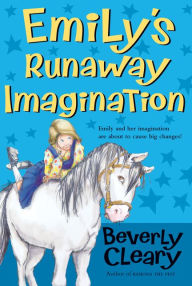
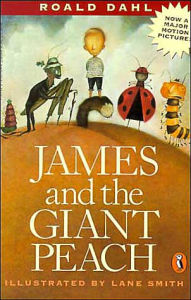


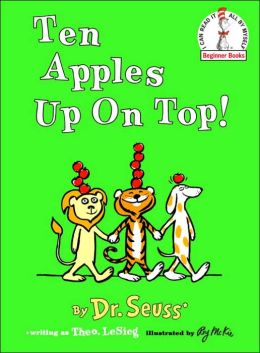
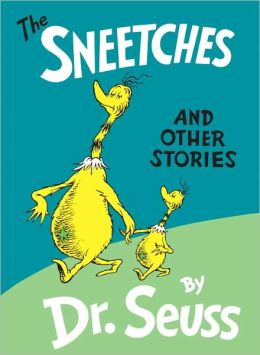

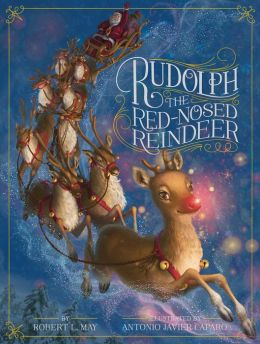
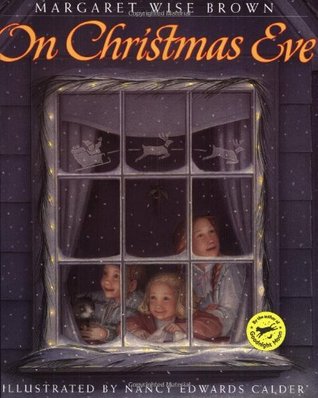
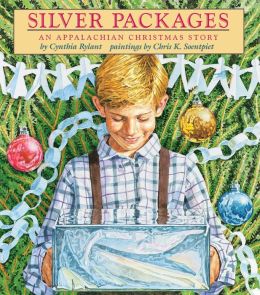

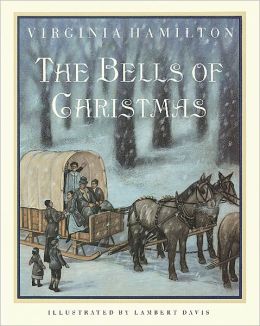

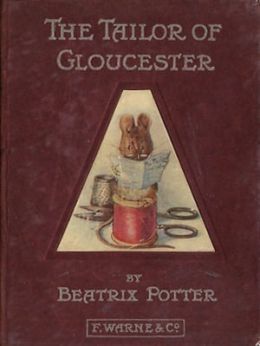





sounds interesting... i might get it for the easter break!
best wishes,
edie
www.chocolatesandmartinis.com
Livres Gratuits - E-books Gratuits : Acceptez de recevoir des livres gratuits selectionnés pour votre developpement personnel et professionnel!
Ebook Gratuit